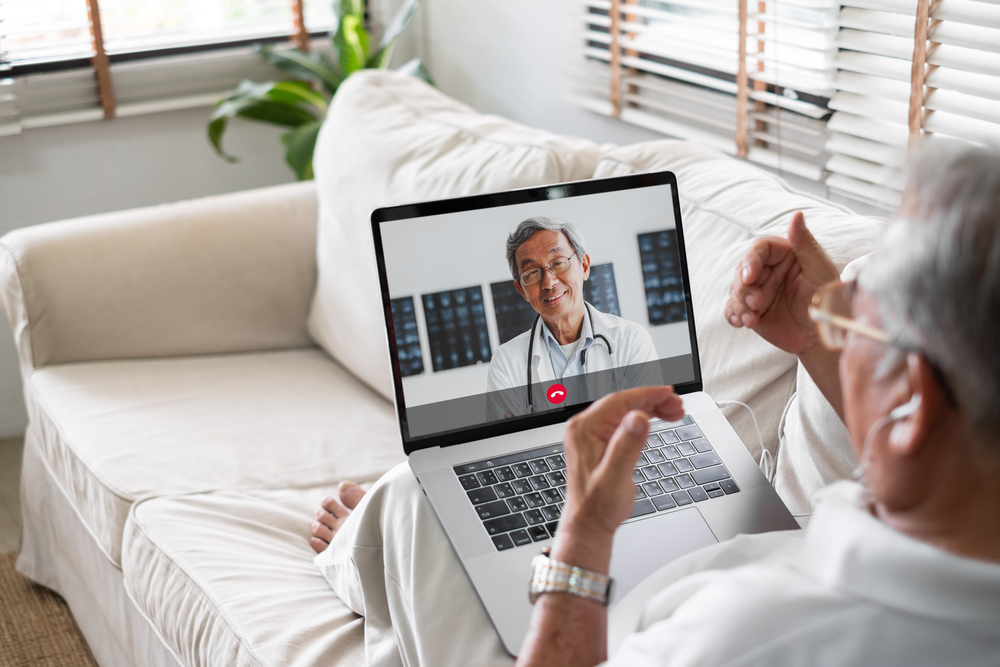27 Apr The Impact of Telemedicine in Healthcare: Before and After COVID-19 [Podcast]
This podcast was recorded in August of 2020.
Jared Augenstein is the director at Manatt Health, an interdisciplinary policy and business advisory practice of Manatt. Jared’s primary areas of focus are advising public and private sector clients on health delivery system transformation, population health, digital health, international, and global health, federal and state health policy trends and provider markets. He’s had extensive experience assisting large healthcare systems, academic medical centers, and children’s hospitals with strategic planning and implementation related to delivery system transformation.
Jared spoke with us on the Precision Insights podcast about telehealth, and how it has been affected by the COVID-19 pandemic, along with his predictions for the future of telehealth. What follows is a summary of the discussion we had with him; the full podcast can be accessed here.
“We’re on the cusp of really exciting changes related to digital health and telemedicine.”
Telehealth during COVID-19

How are telehealth services used during the COVID-19 pandemic? Is telehealth driving a switch to value-based care?
Many States have expanded coverage of telehealth to make it easier for patients to access their provider because of the restrictions that have been put in place. In the commercial space, there has been an 8000% increase in commercial claims for telehealth from April of 2019 to April of 2020.
Before the pandemic, many of the conversations around telehealth were around which areas of care might be unsuitable for virtual delivery. The increase in volume that we have seen recently has forced the issue.
What we’ve found is that clinicians can be uncomfortable providing tele-health when they are being asked to make a diagnosis. Pediatric visits with young kids are also difficult. On the other hand, there are some types of telehealth where the feedback has been good, such as with a lot of behavioral health services.
When it comes to medication renewals, the appropriateness depends on the clinical use case. If patients have been on a medication for a long time and have a really good, long standing relationship with the provider, that type of visit could be done via telemedicine. For other types of visits, such as the prescribing of controlled substances for patients with substance use disorders or prescribing in the pediatric population, the interest will be in having in-person interactions.
(Related Post: Can Virtual Doctors Prescribe Controlled Substances? Is It Safe?)
Reimbursement for Telehealth

Is telemedicine covered by insurance?
There was a shift towards population-based payment models leading up to January, February, and March of 2020 when the pandemic hit. There are two main ideas that influence how that could evolve: providers are unlikely to be willing to take a lot of new financial risk when they are already in a financially uncertain time; on the other hand, health systems and providers that were in value-based payment arrangements generally fared better during the onset of the pandemic.
As we shift towards value-based payment, it’s easier to provide a lot of these types of services—like telemedicine, remote patient monitoring, and digital therapeutics—because we know that the benefits are there. It’s hard to realize those benefits when you’re paid on a fee-for-service model.
The evidence base around a lot of different digital health interventions is really limited. It’s only been over the past one to three years that we’ve seen a proliferation of high-quality, randomized, controlled trials that can show the financial and clinical value of these different types of interventions. Major payers generally require studies like this that show the clinical effectiveness and the financial ROI of a digital intervention. Conversely, providers are not willing to change the way that they’re delivering care unless they know that they’re going to get paid for it.
For Telehealth, the genie’s out of the bottle. It’s going to play out on a payer-by-payer basis, but Medicare has significantly expanded the flexibility for providing tele-health during the pandemic, and a lot of States are likely to expand coverage and reimbursement for telehealth. In the commercial space, it’s more of a mixed bag.
Digital Health

What we’ve begun to see over the past year or two is a lot more rigour around the clinical and financial ROI and effectiveness of different types of digital health interventions and companies that are developing those interventions.
Manatt health helps big health systems and payers sort through what’s real and what’s not. Health systems and payers are also getting more sophisticated in their processes for doing that. One example is the development of digital formularies, which have been developed by some of the largest PBMs in the country. They’re taking the burden off of payers, but also off of providers because they’re referring patients into these programs and figuring out which is the company that really delivers high financial and clinical ROI.
There has been a lot of innovation in terms of trying to solve that specific problem: what’s high value and what’s not? It will be differentiating for a health tech company to get coverage on those digital formularies, because that’s going to be a much easier way to get to payers than going to each individual payer on their own.
A lot of the foundational technology systems in the U S healthcare system have been built to enable billing; they’re not necessarily built around the patient. Some of the newer health tech companies that are having some early success are focused on the consumer experience, whether that’s the patient or the provider.
We will most likely see a lot of innovation in the EHR tele-health integration space. There’s the traditional telemedicine companies, which are one hundred percent focused on what the provider and consumer experiences in the telemedicine visit. Meanwhile, the EHR has a different business model. There’s a lot of opportunity for really streamlining the way that the provider experiences telehealth visits.
(Related Post: Interoperability in Healthcare: Is It Living Up to The Hype?)
Conclusion
Telehealth is an exciting space that has had a massive expansion of use fueled by the COVID-19 pandemic. There are still many issues that need to be addressed, and many areas where real innovation can take place to solve these issues.
However, telehealth still cannot completely replace in-person health visits. Rather, the future of digital health lies in improving the experience for patients and physicians and integrating EHRs to improve the delivery of health care on- and offline. A hybridized model of healthcare will bring the benefits of digital health and in-person care together.
Thank you to Jared Augenstein for appearing on Precision Insights to share his thoughts with us!
About Precision Insights Podcast
The Precision Insights podcast is a podcast series consisting of inspiring conversations around precision medicine with industry thought leaders and innovators. Every month, we share the most cutting-edge technologies, processes, and initiatives in precision medicine. If you’re a patient, healthcare provider, healthcare executive, employer, or someone simply interested in precision healthcare, you’re sure to find something useful in each episode. We hope that you’ll join our listeners and start taking control of your health, or implement precision health into your organization/clinical practice as a result!
The Precision Insights Podcast is proudly made by the GenXys team. Feel free to get in touch with us, we would love to hear your feedback, ideas, or thoughts.




Sorry, the comment form is closed at this time.